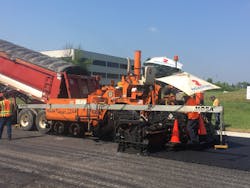Small Cities Struggle With Old Infrastructure
A story on the website Governing provides an example of how smaller cities have difficulty handling the costs to upgrade aging infrastructure such as roads, bridges, and water systems.
Ferndale, Michigan, is highlighted as its mayor, Melanie Piana, describes the dilemma she faces with eight-lane Woodard Avenue.
“The No. 1 reason people move to Ferndale is because of our walkability,” Piana tells Governing, “and the No. 1 complaint I get from residents is they feel uncomfortable and unsafe getting across this eight-lane corridor.”
Woodward Avenue is 200 feet wide, and only six percent of that expanse is dedicated to sidewalks. Almost everything else is for cars, four lanes in both directions with a grassy median dividing the road in half. It is essentially a highway in the middle of a commercial district, and Piana hopes to do something about it.
In 2022, the Michigan Department of Transportation (MDOT) will be repaving Woodward Avenue, and Piana has partnered with the neighboring city of Pleasant Ridge to re-imagine their combined stretch of roadway. But the state will only pay for remaking the road exactly as it was. Any efforts to pedestrianize parts of Woodward or efforts to calm traffic—even studies to prepare for such moves—have to be paid for with resources from local government.
Governing reports that Ferndale does not have the resources to cover those expenses on its own. Piana applied for a $3.9 million federal Transportation Alternatives Program grant and is waiting to see if Ferndale will be awarded the funds. Even if the city receives the grant, it will have to contribute $1.2 million in local funds, which is nearly what the Ferndale spends on street maintenance for the whole municipality, every year.
“We have very limited funds to make the improvements that the community and our businesses really desire,” says Piana. “If we don't get the grant, we can't make these improvements, and MDOT will repave next year regardless. Then we wait for another 10 to 15 years for them to resurface again for us to do this.”
It's a pattern being repeated in small cities throughout the country, even in "younger" municipalities in the west.
You can read the entire story here.
Source: Governing
